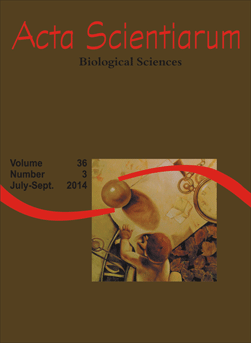<b>Predicting geographic distributions of <i>Phacellodomus</i> species (Aves: Furnariidae) in South America based on ecological niche modeling
Resumo
Phacellodomus Reichenbach, 1853, comprises nine species of Furnariids that occur in South America in open and generally dry areas. This study estimated the geographic distributions of Phacellodomus species in South America by ecological niche modeling. Applying maximum entropy method, models were produced for eight species based on six climatic variables and 949 occurrence records. Since highest climatic suitability for Phacellodomus species has been estimated in open and dry areas, the Amazon rainforest areas are not very suitable for these species. Annual precipitation and minimum temperature of the coldest month are the variables that most influence the models. Phacellodomus species occurred in 35 ecoregions of South America. Chaco and Uruguayan savannas were the ecoregions with the highest number of species. Despite the overall connection of Phacellodomus species with dry areas, species such as P. ruber, P. rufifrons, P. ferrugineigula and P. erythrophthalmus occurred in wet forests and wetland ecoregions.
Downloads
DECLARAÇÃO DE ORIGINALIDADE E DIREITOS AUTORAIS
Declaro que o presente artigo é original, não tendo sido submetido à publicação em qualquer outro periódico nacional ou internacional, quer seja em parte ou em sua totalidade.
Os direitos autorais pertencem exclusivamente aos autores. Os direitos de licenciamento utilizados pelo periódico é a licença Creative Commons Attribution 4.0 (CC BY 4.0): são permitidos o compartilhamento (cópia e distribuição do material em qualqer meio ou formato) e adaptação (remix, transformação e criação de material a partir do conteúdo assim licenciado para quaisquer fins, inclusive comerciais.
Recomenda-se a leitura desse link para maiores informações sobre o tema: fornecimento de créditos e referências de forma correta, entre outros detalhes cruciais para uso adequado do material licenciado.












1.png)




3.png)













